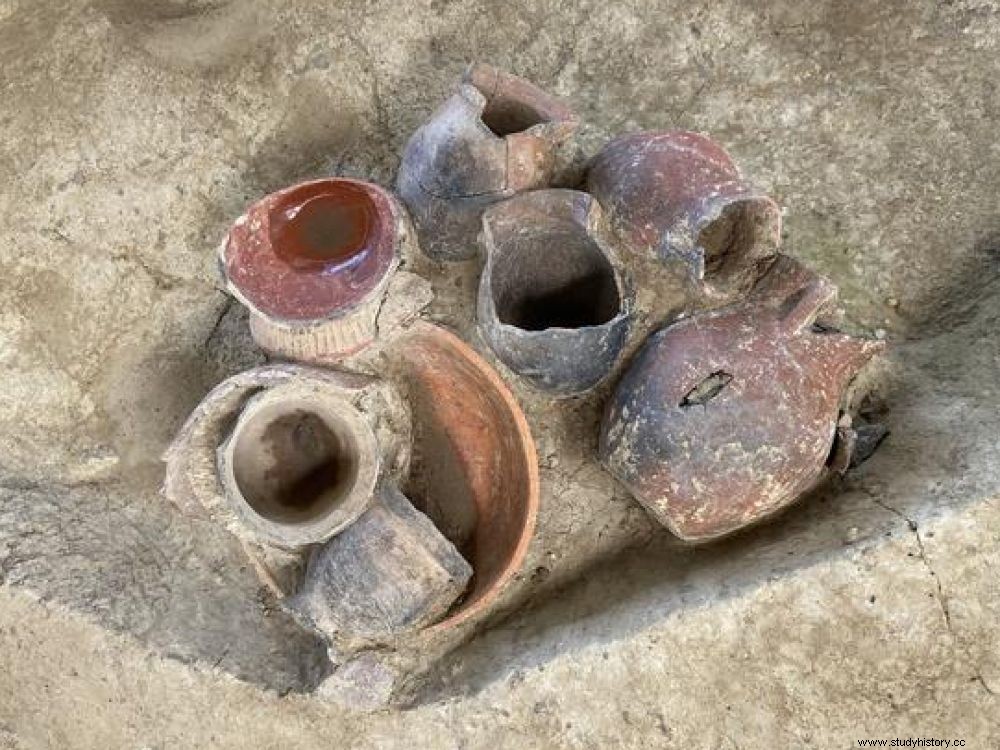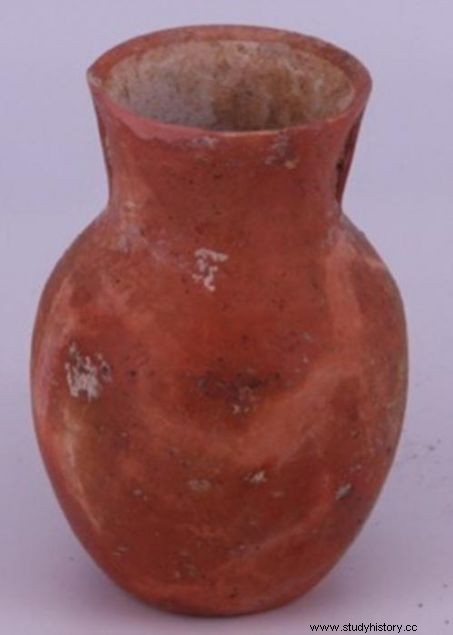We mostly know it as white, blonde, red or brown… But 9,000 years ago, it was a “rice beer” that was consumed in China, and this, in a very specific context.

The analysis detected beer residue in eight containers out of the twenty that were studied.
The production of beer dates back to the beginnings of agriculture and sedentarization:in the Near East, a similar drink could have been brewed some 13,000 years ago, and the oldest brewery in the world , dated to the 4th millennium, was recently unearthed in Egypt. If the human penchant for beer is not new, it has not always been so tasty. In fact, it was not until the Middle Ages that the preservative virtues of hops were discovered and added to the preparation, giving it that bitter taste that is so divisive today.
In fact, any fermented drink can be considered beer if it has undergone two successive transformations:saccharification and fermentation. While wine and mead are made from substances composed of sugars that can be transformed into alcohol on contact with yeasts, such as fruit or honey, beer is made from substances that contain starch - rice, millet, barley, corn, etc. -, and which must first be transformed into sugar (this is saccharification) in order to then be transformed into alcohol (this is fermentation). The starch of the initial preparation is therefore transformed into sugar by enzymes, then becomes alcohol on contact with the yeasts.
But on what occasions did the Ancients toast?
The production of beer dates back to the beginnings of agriculture and sedentarization:in the Near East, a similar drink could have been brewed some 13,000 years ago, and the oldest brewery in the world , dated to the 4th millennium, was recently unearthed in Egypt. If the human penchant for beer is not new, it has not always been so tasty. In fact, it was not until the Middle Ages that the preservative virtues of hops were discovered and added to the preparation, giving it that bitter taste that is so divisive today.
In fact, any fermented drink can be considered beer if it has undergone two successive transformations:saccharification and fermentation. While wine and mead are made from substances composed of sugars that can be transformed into alcohol on contact with yeasts, such as fruit or honey, beer is made from substances that contain starch - rice, millet, barley, corn, etc. -, and which must first be transformed into sugar (this is saccharification) in order to then be transformed into alcohol (this is fermentation). The starch of the initial preparation is therefore transformed into sugar by enzymes, then becomes alcohol on contact with the yeasts.
But on what occasions did the Ancients toast? If it is possible to contextualize the consumption of beer from the 4th millennium and the first writings, before this date, historians can only rely on archaeological data, which allows less to identify the role of conceived alcohol than its composition. A team of researchers from Dartmouth College in New Hampshire, however, managed to draw some early interpretations of the role of beer in China, presented in an article published in the journal Pl bone One .
The drink was probably rice beer
In China, the sedentarization of populations began around 7,000 BC. The first habitats were relatively modest but more advanced settlements, with collective dwellings, storage facilities or burials , have also been revealed. Qiaotou, the site on which the study is based, is one of these primitive buildings.

Location of Qiaotou. Credits:Plos One
The researchers suspected the consumption of beer on this site after noting that among the pottery found on the site, the shape of some evoked the containers used later to drink alcohol, called “pots Hu”. To ensure that they were already used to drink alcohol, the research team analyzed microfossil residues extracted from the interior surfaces of the containers. They thus identified micro-botanical (starch granules and silica concretions) and microbial (mold and yeast) residues, and compared them to control samples collected from the soil, to ensure that they did not was not a natural mechanism.

"Hu" pottery. Credit:Leping Jiang
"Our results revealed that pottery vessels were used to hold beer, in its most general sense - a fermented drink made from rice (Oryza sp.), a grain called Job's tears (Coix lacryma - jobi) and unidentified tubers ”, says Jiajing Wang, assistant professor of anthropology at Dartmouth and co-author of the study, in a press release. The drink was probably a "rice beer", quite different from that found at the contemporary Jiahu site, to which honey and fruit had been added.
According to later written sources, the making of beer in ancient China relied on three saccharifying agents:human saliva, sprouted grains and mold ferments. Here, analysis of the pot residue showed traces of mold, making the site the oldest example of the technique being used. “If people had leftover rice and the grains were moldy, they might have noticed that the grains were getting more and more sugary and alcoholic. People may not have known the biochemical theory associated with moldy grains, but they have probably observed the fermentation process and experienced it through trial and error ”, explains Wang.
The clues coincide with a ceremonial consummation
Several clues suggest that it was a beverage synonymous with celebration. On the one hand, the beer pots were found on the fringes of the places of life:it seems inconsistent that they were part of the daily life of the inhabitants of the places. Then, unlike the fairly basic pottery found near residential sites, Qiaotou vessels are of high quality. Finally, harvesting rice, then in the process of being domesticated, still required a lot of labor. In the publication, the researchers indicate that a prehistoric hunter-gatherer had to spend more than eight hours collecting wild rice to obtain sufficient daily food. Under these circumstances, it is no wonder that beer was reserved for special occasions.
At the Qiatou site, it seems that beer was consumed during funeral rites. Indeed, the researchers found two skeletons near the pottery. Stones were also found, and could indicate the existence of a structure compatible with a ceremonial building.
The social role of beer consumption had already been highlighted in other regions of the world. In ancient Egypt, beer was an object of exchange, while in the Andes its production served to define social relations and legitimize power. The data from Qiaotou nevertheless stands out, because it is an example of beer consumption in a pre-agricultural and still egalitarian context. Enough to confirm that beer is suitable for all circumstances - but always in moderation.
